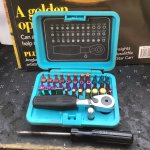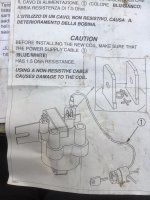Hi folks - firstly thank you to all the members here. The contributed forum content, from technical walkthroughs to guidance, is excellent - it's been a fantastic help.
I've got a '66 F, and have recently installed a 650cc 126p engine & box. It's got the 'modern' ecu and crank sensor timing system.
I am looking for some advice regarding it's current running situation. Air bubbles flowing quite fast through the fuel return loop, which whilst I've sort of got it idling, applying any throttle it will try and cut out. Presumably because the air:fuel mixture is being affected by the unwanted bubbles?
I see a fair number of folks on here that have done the swap followed the same approach for the IMB28 of having a T-piece in the engine bay, which I've also done. I recall other comments suggesting no bubbles on the push side is the goal.
From what it looks like, the bubbles are being introduced at the carb. Since the outlet of the Carb return is now on the suction side of the pump.
I've replaced all the jets, float device (set per the manual), and given it a light clean, so I'm not ruling out something I've inadvertently done in the process. I've double checked all the fuel hose clamps for tightness, which are all good.
Any thoughts what would be causing these bubbles? Caution: loud video.
Cheers!
I've got a '66 F, and have recently installed a 650cc 126p engine & box. It's got the 'modern' ecu and crank sensor timing system.
I am looking for some advice regarding it's current running situation. Air bubbles flowing quite fast through the fuel return loop, which whilst I've sort of got it idling, applying any throttle it will try and cut out. Presumably because the air:fuel mixture is being affected by the unwanted bubbles?
I see a fair number of folks on here that have done the swap followed the same approach for the IMB28 of having a T-piece in the engine bay, which I've also done. I recall other comments suggesting no bubbles on the push side is the goal.
From what it looks like, the bubbles are being introduced at the carb. Since the outlet of the Carb return is now on the suction side of the pump.
I've replaced all the jets, float device (set per the manual), and given it a light clean, so I'm not ruling out something I've inadvertently done in the process. I've double checked all the fuel hose clamps for tightness, which are all good.
Any thoughts what would be causing these bubbles? Caution: loud video.
Cheers!





